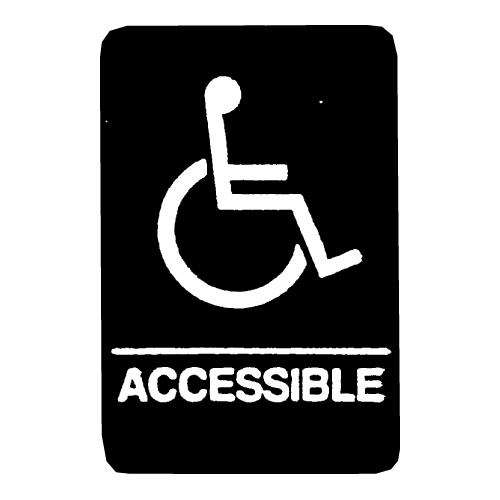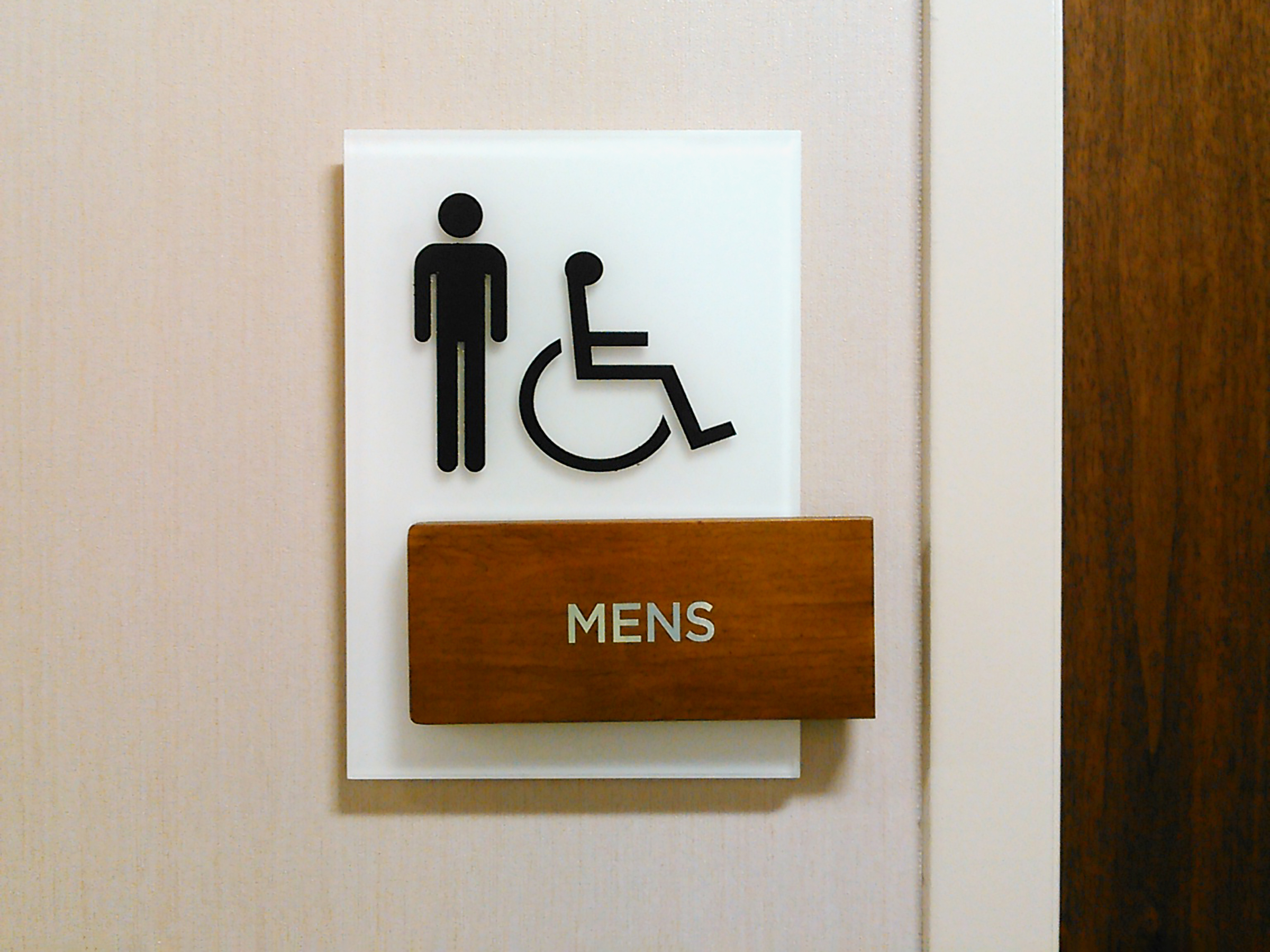How ADA Signs Boost Availability for Everyone
Discovering the Trick Features of ADA Signs for Enhanced Access
In the world of accessibility, ADA indications function as silent yet effective allies, making certain that areas are inclusive and navigable for individuals with specials needs. By incorporating Braille and responsive elements, these indicators damage obstacles for the visually impaired, while high-contrast color pattern and readable typefaces cater to varied aesthetic needs. Their strategic positioning is not approximate but rather a calculated initiative to help with smooth navigation. Yet, beyond these features exists a deeper narrative regarding the development of inclusivity and the recurring commitment to creating fair rooms. What a lot more could these indicators represent in our search of global accessibility?
Value of ADA Compliance
Making certain conformity with the Americans with Disabilities Act (ADA) is important for promoting inclusivity and equivalent access in public areas and offices. The ADA, established in 1990, mandates that all public centers, companies, and transportation services accommodate people with impairments, guaranteeing they appreciate the same rights and possibilities as others. Compliance with ADA requirements not just satisfies lawful commitments but likewise improves an organization's online reputation by showing its dedication to variety and inclusivity.
One of the crucial elements of ADA compliance is the implementation of obtainable signs. ADA indicators are created to make certain that people with impairments can easily navigate through structures and areas.
In addition, sticking to ADA guidelines can reduce the threat of legal repercussions and prospective fines. Organizations that fall short to abide by ADA guidelines might face fines or suits, which can be both destructive and monetarily burdensome to their public photo. Therefore, ADA compliance is important to fostering an equitable setting for everyone.
Braille and Tactile Components
The unification of Braille and tactile components right into ADA signage symbolizes the concepts of availability and inclusivity. It is usually placed below the equivalent message on signage to ensure that individuals can access the info without aesthetic aid.
Responsive components prolong past Braille and include increased personalities and symbols. These components are made to be noticeable by touch, allowing individuals to recognize space numbers, washrooms, departures, and other important areas. The ADA establishes details guidelines relating to the dimension, spacing, and positioning of these tactile elements to maximize readability and guarantee uniformity across various environments.

High-Contrast Color Design
High-contrast color pattern play an essential function in improving the presence and readability of ADA signage for people with aesthetic problems. These systems are crucial as they make best use of the difference in light reflectance in between message and history, making certain that indications are easily discernible, even from a range. The Americans with Disabilities Act (ADA) mandates making use of certain color contrasts to suit those with restricted vision, making it an essential aspect of conformity.
The efficiency of high-contrast colors hinges on their ability to stick out in various lighting conditions, consisting of dimly lit settings and areas with glow. Generally, dark text on a light history or light text on a dark history is used to accomplish optimum comparison. Black article source text on a yellow or white history provides a raw visual difference that helps in quick acknowledgment and understanding.

Legible Fonts and Text Size
When considering the layout of ADA signage, the selection of legible font styles and ideal text dimension can not be overstated. These aspects are important for making sure that indicators come to people with aesthetic problems. The Americans with Disabilities Act (ADA) mandates that fonts should be not italic Learn More and sans-serif, oblique, manuscript, highly decorative, or of uncommon type. These demands help guarantee that the text is quickly legible from a distance and that the personalities are distinguishable to varied audiences.
The size of the message also plays a pivotal duty in accessibility. According to ADA standards, the minimum text height ought to be 5/8 inch, and it must raise proportionally with checking out range. This is particularly essential in public areas where signage needs to be read quickly and accurately. Consistency in text size adds to a cohesive visual experience, assisting people in browsing atmospheres effectively.
In addition, spacing in between lines and letters is essential to readability. Ample spacing prevents personalities from appearing crowded, enhancing readability. By sticking to these standards, developers can considerably improve availability, guaranteeing that signs serves its desired purpose for all people, no matter of their visual capacities.
Efficient Positioning Methods
Strategic positioning of ADA signs is essential for making the most of access and making certain compliance with lawful standards. ADA guidelines specify that indications ought to be placed at an look at here now elevation in between 48 to 60 inches from the ground to guarantee they are within the line of view for both standing and seated individuals.
In addition, indications need to be positioned beside the lock side of doors to permit simple identification prior to entrance. This positioning assists people find rooms and areas without obstruction. In situations where there is no door, indications must be positioned on the local surrounding wall surface. Consistency in indicator positioning throughout a facility improves predictability, reducing complication and boosting overall customer experience.

Conclusion
ADA signs play an important role in promoting ease of access by incorporating functions that deal with the requirements of individuals with handicaps. These components jointly cultivate an inclusive environment, highlighting the relevance of ADA conformity in making sure equal gain access to for all.
In the realm of availability, ADA indicators serve as quiet yet powerful allies, ensuring that spaces are accessible and comprehensive for individuals with specials needs. The ADA, established in 1990, mandates that all public facilities, employers, and transportation solutions suit individuals with specials needs, guaranteeing they appreciate the same legal rights and possibilities as others. ADA Signs. ADA indicators are made to make sure that people with handicaps can quickly browse via buildings and areas. ADA standards specify that signs should be installed at a height in between 48 to 60 inches from the ground to guarantee they are within the line of view for both standing and seated people.ADA indicators play an essential duty in advertising ease of access by incorporating features that address the needs of individuals with handicaps